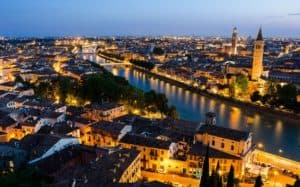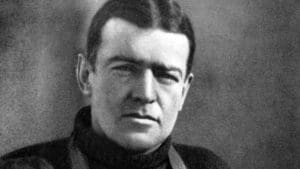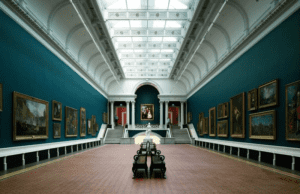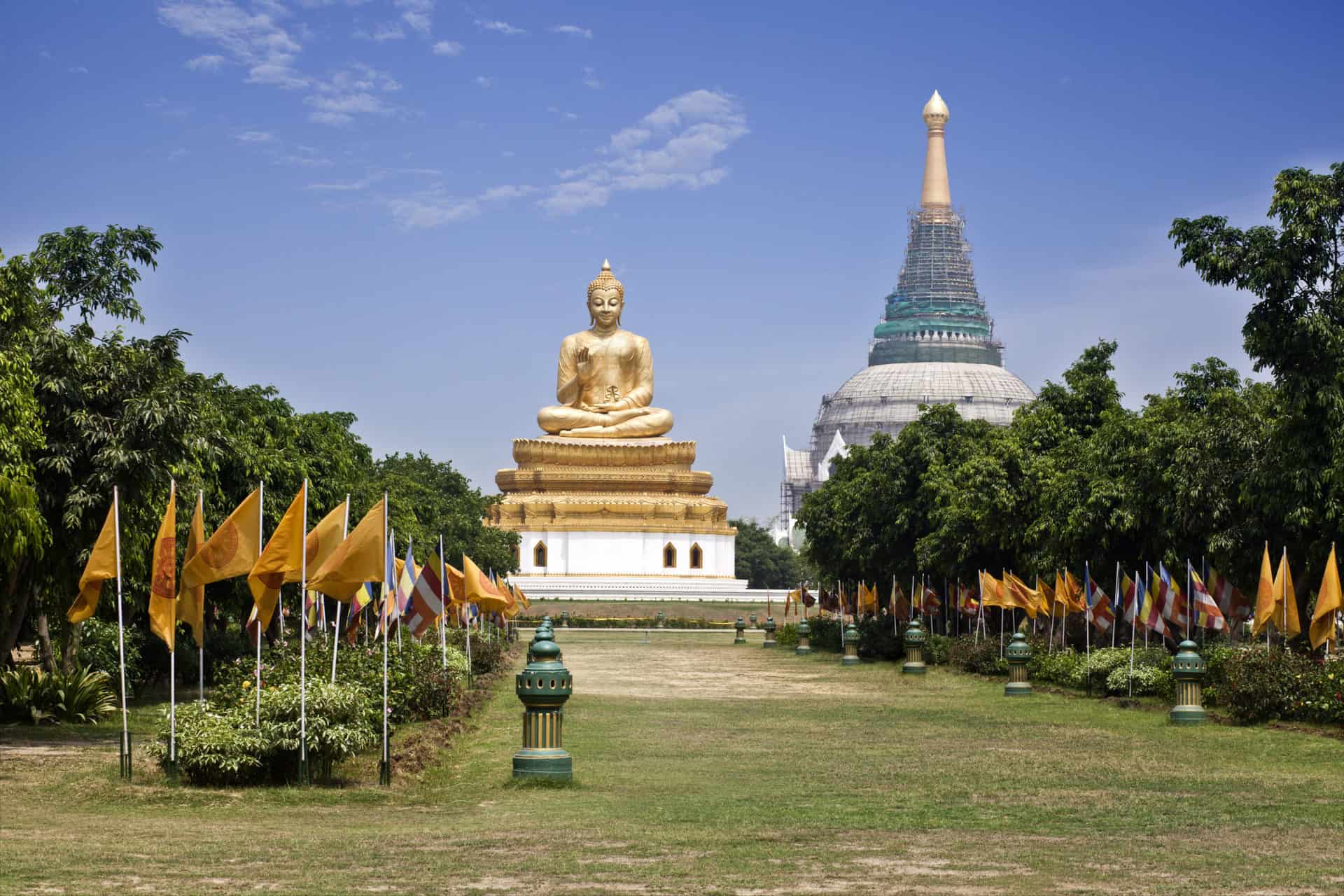Festivals of Fire: Celebrating Bealtaine to Diwali Around the World

Updated On: April 22, 2024 by Raghda Elsabbagh
Around the world, fire holds a significant place in many traditions, symbolising rebirth, purity, and the coming together of communities. Festivals of fire, such as Bealtaine in Ireland and Diwali in India, are times of great celebration, deeply rooted in the cultural fabric of societies, showcasing a reverence for the blazing element that has shaped human history from its earliest days. These festivals are not only spectacular visual feasts but also serve as a bridge connecting the past and present, a time for individuals to embrace shared customs and heritage.

Bealtaine, often held on the first day of May, ushers in the summer season with bonfires and revelry, drawing on ancient Celtic customs to honour life and fertility. Diwali, or the Festival of Lights, marks a different kind of fire festival, one that brightens the skies with the soft glow of lamps and fireworks, signifying the victory of light over darkness, and knowledge over ignorance. Both festivals, while geographically and culturally distinct, reflect the universal human fascination with fire and the perennial hope it inspires across continents and cultures.
Table of Contents
The Cultural Significance of Festivals of Fire
Fire festivals serve as a potent symbol in various cultural traditions, symbolising regeneration, warmth, and the triumph of light over darkness. In the context of ancient Pagan and Celtic celebrations, such as Bealtaine, fire represents the sun’s return, marking the beginning of summer and the vital fire that fuels life and growth.
Rituals often involve lighting bonfires as a form of protection, embracing the cleansing power of fire. These traditions are thought to bring good fortune and are steeped in the belief that fire has the power to purify and renew.
Switching to a more global perspective, these elemental celebrations are not just confined to one tradition. In Hinduism, Diwali is known as the Festival of Lights, where fire in the form of small lamps called ‘diyas’ illuminate homes, representing good conquering evil.
This transition from Pagan roots to Christian interpretation can also be seen in festivities like Easter Vigil, where a new fire is lit, symbolising Christ as the light of the world.
Our celebrations across cultures, from Celtic to Christian to Hindu traditions, encapsulate communal experiences that connect us to our past and to each other. It’s in these shared moments around the blaze that we find common ground, where the warmth of community and shared heritage is felt most keenly.
Bealtaine: The Festival of Fire in Ireland
Bealtaine heralds the onset of summer in Ireland and marks an important date in the Celtic calendar. This ancient festival, rich in tradition, revels in the awakening of the land and the promise of new life.
Origins and History
Bealtaine, traditionally celebrated on the first day of May, originates from the early Irish Gaelic culture, where it signified the beginning of summer. Central to this pagan festival was the lighting of bonfires, symbolizing the return of light and warmth. As our Irish ancestors observed agriculture deeply, Bealtaine held considerable significance for fertility and growth. With the advent of Christianity, the festival became intertwined with the Christian calendar, yet many of the Celtic traditions continued to be observed. The Bealtaine Fire Festival, as it was known, honed in on the idea of purification and transition, channelling the energy of the natural world to encourage positivity in the coming season.
Modern Celebrations and Heritage Talks
In recent years, we’ve seen the resurgence of the Bealtaine Fire Festival. Today’s celebrations maintain their roots in tradition while embracing community and heritage in a modern context. Communal fires are still lit, particularly on the Hill of Uisneach, a site deeply woven into Irish lore and regarded as a sacred centre of the country. These festivals offer a blend of music, dance, and heritage talks that connect them back to the very essence of our Irish identity. At these gatherings, historical narratives merge with contemporary artistry to celebrate Ireland’s amazing Irish heritage through mindfulness and yoga that speak to our ongoing cultural evolution.
Rites of Bealtaine: Connecting with Ancestors
The Bealtaine festival marks the beginning of summer in the Gaelic calendar, with ceremonies honouring ancestors and the protective powers of fire.
Ceremonial Practices and Bonfires
We observe Bealtaine on May 1st, which is inherent in rituals celebrating life and the dead. Central to the festival is the kindling of bonfires, a tradition rooted in ancient beliefs of purification and protection. The Druids, Celtic priests of old, orchestrated these fires, especially on the Hill of Uisneach, considered the navel of Ireland. These ceremonial flames serve as a beacon, bridging the gap between us and our ancestors, recognising our shared continuity with the past.
Superstitions and Beliefs
Our ancestors deeply embedded superstition into the fabric of Bealtaine. They believed the veil between the worlds was thin, allowing us to commune with those who came before. It is thought that carrying flames from the sacred bonfires to our homes guarantees prosperity and thwarts misfortune. These practices underscore a veneration for tradition and a respect for the capricious nature of luck and fate, central to understanding our cultural heritage.
Symbolism of Fire: Hearth, Home, and Purification
Fire has been central to human existence, offering warmth, light, and a means to cook food. Its role extends beyond the practical, embodying profound symbolism across various cultures and traditions. At the centre, the hearth represents the heart of the home, a sacred space providing heat and sustenance while also acting as a gathering point for families.
Traditionally, the hearth is a symbol of unity and stability. In many beliefs, fire present in the hearth is thought to protect against evil, warding off malevolent spirits. In ancient times, it was common to keep the hearth lit continuously, its enduring flame signifying the persistence of the home through adversity.
| Symbol | Significance |
|---|---|
| Hearth | Unity, stability |
| Home | Safety, warmth |
| Fire | Protection, purification |
In a broader sense, fire signifies purification and renewal. Various festivals incorporate fire to signify the cleansing of disease and the rejuvenation of crops. Bonfires during Bealtaine, for instance, were traditionally lit to purify livestock, protecting them from illness.
Our dwellings are considered sanctuaries, and the maintenance of a fire within the hearth is a ritual that has historically fortified that sanctity, curating an environment purified from spiritual and physical contaminants. The presence of fire is a steadfast guardian against the unseen, ensuring our homes remain a refuge from the outside world.
Fire, in its essence, is transformative. It possesses the power to alter substances, purify spaces, and protect life. As a versatile symbol, it encompasses the essence of hearth, home, and purification, continuing to hold significant meaning in our lives today.
Diwali: The Indian Festival of Lights
In this section, we explore Diwali’s heritage and how it is celebrated today, resonating with millions around the globe.
Historical Roots and Religious Background
Diwali, also known as Deepavali, is one of the most revered festivals in India and has deep historical and religious roots. Its name, derived from Sanskrit, means “row of lights,” reflecting the festival’s primary symbol of illuminated earthen lamps. Celebrated over five days, Diwali symbolises the triumphant return of Lord Rama to Ayodhya after defeating the demon king Ravana, as described in the Hindu epic, Ramayana. The lighting of lamps signifies the light within all beings and the victory of knowledge over ignorance.
The celebration extends beyond Hinduism, with variations observed by Sikhs, who celebrate the release of Guru Hargobind from imprisonment, and Jains, who mark the nirvana of Lord Mahavira. Each tradition incorporates the lighting of lamps, which plays a crucial role in the festivities, symbolising hope, renewal, and the victory of light over darkness.
Contemporary Observances and Global Impact
Today, Diwali is a time for vibrant celebrations, marked by dazzling fireworks, the lighting of lamps, and the exchange of sweets and gifts. Families clean and decorate their homes with diyas and colourful rangolis. It’s a social festival that brings communities together in joy and reverence, transcending borders and becoming a global phenomenon.
The festival’s impact has grown with the Indian diaspora, making its presence felt across the world. Diwali is now celebrated in various countries, reflecting India’s cultural influence and the universal resonance of its themes of light, knowledge, and goodness. As a testament to its global significance, major landmarks have been illuminated to honour the festival, and it has become a fixture in international calendars.
Seasonal Festivities: From Bealtaine to Lughnasadh
As we explore the rich tapestry of Celtic festivals, we find ourselves amidst the fiery celebrations that mark the passage of seasons. Bealtaine heralds the beginning of summer, banked in the warm glow of community bonfires. It’s a time when we gather to welcome the light and bid farewell to the harshness of winter. We light bonfires, the blaze symbolising purification and transition, as we embrace the fertility of the land that sustains us.
- Bealtaine: 1 May
- Bonfires
- Symbol: Purity, Transition
During the harvest season, we then turn to Lughnasadh, which traditionally falls at the start of August. This festival celebrates the first fruits of the harvest, where we give thanks for the abundance the earth provides. It is an important time for us to reflect on our relationship with nature and honour the life-giving sustenance we receive.
- Lughnasadh: 1 August
- Harvest Thanksgiving
- Activities: Fairs, Feasting
Sandwiched between these are the important markers of Imbolc and Samhain. Imbolc, in early February, signals the start of spring, while Samhain at the end of October indicates summer’s end as we prepare again for the cold embrace of winter.
Our cycle of seasons reflects the ebb and flow of natural life, with these festivals deeply rooted in our cultural heritage. Bealtaine ignites the summer fervour, while Lughnasadh bookends this warmth with gratitude for the harvest. As we celebrate these pivotal points, we reaffirm our connection to the past, the land, and the community that unites us.
Cross Quarter Days: Marking the Celtic Calendar
In the Celtic tradition, the year is divided by significant festivals known as Cross Quarter Days, which fall midway between the solstices and equinoxes. These days are crucial in Celtic culture, as they mark the transition of seasons and are celebrated with various fire rituals.
The Celtic Cross Quarter Days consist of:
- Imbolc: Occurring on 1 February, this day heralds the coming of spring and is traditionally associated with the goddess Brighid. It is a time for purification and the lighting of fires to represent the return of warmth and the power of the sun.
- Bealtaine: Celebrated on 1 May, Bealtaine signifies the beginning of summer. Celebrations involve the kindling of bonfires to ensure the fertility of both land and people. It’s a time of growth and the promise of abundance.
- Lughnasadh: Taking place on 1 August, Lughnasadh, also known as Lammas, marks the start of the harvest season. This festival honours Lugh, the sun god, with feasting, games, and, of course, fire ceremonies.
- Samhain: From 31 October to 1 November, Samhain is observed as the final harvest and the start of winter. It’s a moment to honour ancestors and the spirits. The lighting of bonfires serves as protection during this darkest part of the year, the precursor to modern Halloween traditions.
These festivals hold a significant place in our shared heritage, underlining the importance of seasonal changes and the Earth’s natural rhythms. Our linkage to these ancient customs is vital in understanding how our ancestors honoured the land and the cycles of nature. Through the enactment of these time-honoured traditions, we connect with a deep-rooted part of our cultural lineage.
Natural World and Festivities: Honouring Earth’s Cycles

As we observe the rhythms of nature, our festivities become a reflection of Earth’s cycles. Celebrations like the Bealtaine Fire Festival in Ireland echo the joy of Spring’s full bloom and the approaching warmth of summer. This ancient custom venerates the turning of the season from spring to summer, aligning with the Spring Equinox—an auspicious time when day and night are of equal length, highlighting the balance in nature.
- Spring Equinox: Represents equilibrium and the resurgence of life.
- Summer Solstice: Marks the zenith of summer’s glow.
The lighting of bonfires during the Bealtaine heralds the purification and rejuvenation that come with longer days and shorter nights. As we celebrate, we weave a connection with those before us who also honoured these natural transitions.
Furthermore, the Wheel of the Year incorporates these sacred junctures with gatherings such as the solstices and equinoxes, as well as four cross-quarter days. The festival’s cyclical nature anchors our celebrations in the natural world’s very fabric, emphasising the changing seasons’ importance.
Here’s a brief overview of how we honour these natural phenomena:
- Nature’s Rebirth: Spring Equinox festivities rejoice in Earth’s rebirth, symbolising new beginnings.
- Summer’s Apex: The Summer Solstice is feted for the bounty and fullness it brings as nature reaches its most verdant state.
Our customs not only pay homage to these natural cycles but also underscore our reverence for the Earth’s delicate balance. We come together to both celebrate and sustain the profound connection between our lives and the kaleidoscope of the natural world.
Irish Mythology and Folklore: Tales of the Aos Sí
In the tapestry of Irish folklore, the Aos Sí hold a particularly enchanting place. These supernatural beings, akin to fairies or elves, stem from the ancient Druidic beliefs and Irish mythology that have permeated the cultural consciousness for centuries.
- Ancestry: Believed to be descendants of the Tuatha Dé Danann.
- Realm: Dwell in an Otherworld realm, navigating through fairy forts and ancient barrows.
- Interactions with Humans: It’s said their involvement with mortals ranges from benevolent to mischievous.
The tales of the Aos Sí are replete with superstitions, such as the need to avoid harming a fairy fort to prevent their wrath. Numerous narratives detail both the peril and luck brought on by these interactions. For instance, the story of the dead donkey that bestows no riches stands as a reminder of the unpredictable nature of the Aos Sí.
During festivals like Bealtaine, it was customary to honour the Aos Sí to secure their favour and ensure a prosperous season ahead. Bealtaine fires were symbolic of purity and transition, perhaps serving to appease or ward off these Otherworld inhabitants.
Our modern understanding of the Aos Sí enriches our appreciation for the folklore that has shaped much of Ireland’s identity. These tales encapsulate a worldview where the supernatural suffuses the every day, a perspective nearly as bewitching as the Aos Sí themselves.
Ceremonial Foods and Decorations: From May Flowers to Ribbons

During Bealtaine, we see an array of ceremonial foods and decorations that are rich in symbolism and tradition. The May Bush, typically a white thorn, is adorned with ribbons, bright shells and rushlights, transforming it into a festive symbol of the season.
May flowers, such as the primrose, play a significant role in the celebration. Yellow flowers, often associated with the sun’s energy, are woven into garlands or placed around homes and bonfires to invoke the spirit of summer.
In terms of food, the Bealtaine festival includes the sharing of seasonal produce. Historically, foods like oaten bread or dairy products were common, both ingredients linked to fertility and prosperity.
Celebratory bonfires form the heart of Bealtaine celebrations, signifying the light of summer. Community feasts by the fireside would see seasonal dishes being passed around, with every bite a homage to the abundance of the earth.
Our tables during this time are a testament to the fertility and life that Bealtaine stands for. With every ribbon hung on the May Bush or bloom picked for a garland and every dish that graces our feasts, we partake in a timeless cycle of seasons.
Indeed, as we gather ribbons, prepare floral decorations, and craft meals from the gifts of nature, we’re not just celebrating a point on the calendar. We’re continuing a cultural tapestry, interweaving the past with our present, honouring the transformations that define the human experience with the earth’s cycles.
Festivals of Fire in Transition: Adaptations and Modernity

Fire festivals, with their deep roots in history, continue to burn brightly in the tapestry of modern celebrations. These festivals, such as the Gaelic Bealtaine, have undergone significant transformations to thrive in contemporary society. Adaptation is key to this evolution, with ancient traditions being reinvented to suit modern sensibilities and contexts.
- Heritage: We see a strong drive to preserve the rich cultural heritage that fire festivals represent by integrating them into educational projects and community initiatives.
- Culture: Through modern fire festivals, we experience a melting pot of the old and the new, where the core elements of fire symbolism and communal gatherings are laced with contemporary performance arts.
- Traditions: The essence of tradition, like the ritual bonfires of Bealtaine, is maintained even as new practices are embraced to ensure relevance and accessibility to a broader audience.
- Modern Celebrations: Today’s celebrations often incorporate digital media, attracting global participation and allowing these festivals to flourish beyond their geographic origins.
As keepers of ancient wisdom, we are charged with the task of not just preserving these festivals but allowing them to grow. It is through carefully mediated changes that the spirit of fire festivals like Diwali—an Indian festival of lights symbolising the victory of light over darkness – can continue to illuminate our world. We honour the past by curating experiences that resonate with present sensibilities, maintaining the flame of tradition well into the future.
Frequently Asked Questions
In this section, we address some common inquiries surrounding the intriguing traditions and practices of various global fire festivals. From the ancient rituals of Bealtaine to the dazzling displays of Diwali, we explore the significance and customs that define these vibrant celebrations.
What are the key characteristics of the Beltane Fire Festival?
The Beltane Fire Festival, rooted in ancient Celtic traditions, marks the beginning of the pastoral summer season. Key characteristics include the lighting of bonfires, the symbolic passage between these fires, and the May Queen’s role in leading the festivities, embodying the earth’s fertility.
How is Diwali, the Festival of Lights, traditionally celebrated?
Diwali, celebrated by Hindus, Sikhs, and Jains, involves illuminating homes and temples with lamps and candles, setting off fireworks, sharing sweets, and worship. The lighting of earthen lamps is a central ritual representing the victory of light over darkness, and knowledge over ignorance.
What is the significance of fire in the Yamana Fire Festival?
In the Yamana Fire Festival, fire symbolises the sun’s warmth, celebrating the return of longer days. It is a time-honoured tradition signifying rebirth and rejuvenation following the winter season. The community gathers for the flame-lighting ceremony, reflecting hope and renewal.
Can you describe the customs associated with the San Juan Festival?
During the San Juan Festival, which is celebrated on the summer solstice, bonfires blaze, symbolising purity and the cleansing of the spirit. Participants often jump over the flames, a custom believed to protect against evil spirits, bringing good luck for the upcoming year.
Which festival is recognised as the world’s largest fire festival?
The Up Helly Aa festival, held in Shetland, Scotland, is known as the world’s largest fire festival. Featuring a torch-lit procession, a replica Viking longship is set ablaze, paying homage to the islands’ Norse heritage. It represents the end of winter and the rebirth of the sun.
What are the typical traditions and activities during the Irish Bealtaine Festival?
Traditional practices of the Irish Bealtaine Festival include lighting bonfires to honour the sun, decorating homes with yellow flowers tied in May Boughs, and washing faces in the morning dew for health and beauty. It is a time to celebrate growth and prosperity.






